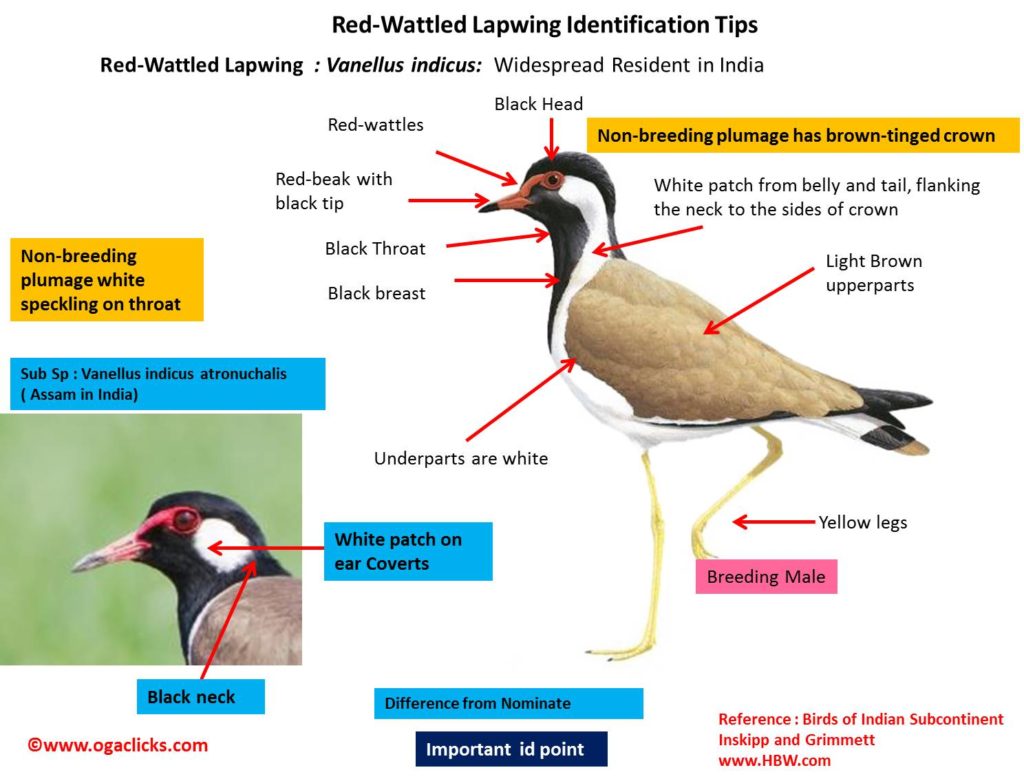
Red-wattled Lapwing Vanellus indicus
Etymology:
- Vanellus : Latin word for fan like wings derived from vannus –winnowing fan
- Indicus : From India
Vernacular names: Sind: Tateehar, Hindi: Titeeri, Titai, Titi, Titori, Lal Lolki titihari, Sans: Tamramukh titttibh, Kash: Hatatut, Hatatertu, Pun: Tatihri, Ass: Balighora, Tetatua, Cachar: Dao duyip, Mani: Salangkak, Guj: Titodi, Mar: Lalmukhi titvi, Titwi, Ori: Titiri, Ta: Alkaati, Te: Yennapa chitawa, Mal: Chenkanni, Kan: Kempu tittibha, Rudhira, Sinh: Kiraluwa, Kirala
Distribution in India: Widespread resident in India.
Description: Size: 32-35 cm. The wings and back are light brown with a purple to green sheen, but the head, a bib on the front and back of the neck are black. Prominently white patch runs between these two colours, from belly and tail, flanking the neck to the sides of crown. Short tail is tipped black. A red fleshy wattle in front of each eye, black-tipped red bill, and the long legs are yellow. In flight, prominent white wing bars formed by the white on the secondary coverts. The juvenile has generally duller plumage, with whitish throat; greyish-brown breast and crown, latter with white speckles. First-year has dark brown crown and throat mixed in black and white. Races generally differ only rather slightly, mainly in amount of gloss, coloration of upperparts and size; race atronuchalis ( Arunachal Pradesh) has slender white hindneck collar, with white patch on ear-coverts isolated from white breast.
Habitat:It is found in open areas near fresh or brackish water: jheels, rivers, mud banks, wet grassland, pools particularly on cultivated land. It is found till 1800 m.
Food Habits:It eats beetles and other insects, including ants, butterfly and fly larvae, grasshoppers, crickets, bugs, earwigs and termites; also molluscs, worms and crustaceans. It feeds mostly at dawn and dusk, and during moonlit night.
Breeding Habits: The breeding season is mainly March to August. They are monogamous .The courtship involves the male puffing its feathers and pointing its beak upwards. The male then shuffles around the female. Several males may display to females and they may be close together.. The nest is shallow scrape, unlined or lined with small stones, shells and debris, usually sited near water; also on flat pebbled roofs. They lay a clutch of 3-4 eggs. Both the male and female incubate the eggs and divert predators using distraction displays or flash their wings to deter any herbivores that threaten the nest .The incubation is 26-30 days. The fledging period is 38 days.
.